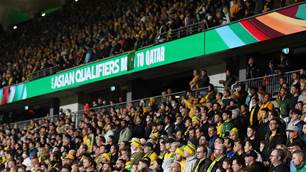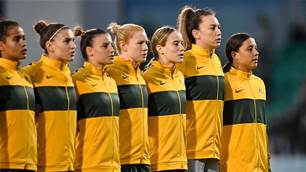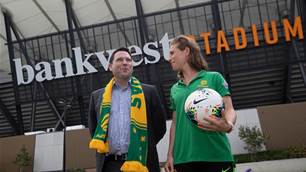EXCLUSIVE: Football Federation Australia will regularly get clubs to massage their salary capped contracts to fix any problem before it becomes a scandal, a former FFA insider has claimed.
In the wake of allegations that the FFA deliberately ignored Sydney FC breaching the salary cap when they won the double in 2009/2010, it's understood HAL clubs will frequently operate in a grey zone on the fringe of cap limits.
Margins can be so tight and contracts so variable, FFA officials will often find clubs are projected to spend, usually inadvertently, beyond their set limits during a season.
But so long as any overspending can be reined in by tweaking contracts before the season ends, the FFA will work with the club to resolve issues by fudging the figures within the guidelines before they escalate out of control, it's claimed.
However Sydney were said to be particularly vulnerable to crossing the line in 2009/10 because of:
- A massively complicated ASA structure that needed a 300-page dossier to justify it.
- The double-title win and extended finals run potentially activating expensive win bonuses and additional match fees
- Complex contracts inherited from previous administrations
- And new key management being unfamiliar with working in a salary cap environment.
Just two or three FFA staff are said to be responsible for checking all player contracts for all A-League clubs as well as all the squads of the National Youth League, and W-League, in addition to their normal day to day duties.
Despite the workload, continual monitoring by the FFA has regularly identified problems over the course of a season at several clubs in the A-League, according to the one-time FFA official.
But creative accounting techniques, tweaking contracts - often frontloading them so players earn more in one season than the next to ensure all the cap is spent, or alternatively delaying payments until the following season - can bring pay back on track.
Contracts of key players being paid substantially less than younger, less experienced or less talented players are also said to have also drawn the scrutiny of FFA staff, but were ultimately resolved in negotiations between the FFA and club officials.
In addition to the basic salary, A-League contracts often also include sweeteners such as rental homes, cars and other bonuses or extras which must be assigned a realistic value under the cap rules.
On top of those, Additional Service Agreements can be a minefield for clubs, and that was especially so in 2009/10.
These payments give clubs leeway for key players to be paid extra in return for work away from normal game time and training.
Former Newcastle Jets owner Con Constantine refused to use the ASAs because of their lack of transparency.
But an already complicated ASA system became even more complicated in 2009/10 when major changes were introduced to the system after consultation with the PFA.
In 2008, clubs could arrange deals worth $475,000 in ASAs in total, with the cash coming from both the club and/or third parties.
That was reduced in 2009/10 to just $250,000 - with the other $225,000 now included in the salary cap itself - but all the new ASAs from that season on must now come from third parties.
However any existing ASA contracts signed in 2008 or before were still applicable, adding yet another level of confusion to the system.
Normally ASAs are restricted to four or five players in a squad and include items like contracts for writing a newspaper column which can be worth tens of thousands of dollars a year. All ASA payments must be in line with standard market value and must be proved to have been carried out.
However Sydney FC are said to have had the most complicated set of ASAs in the A-League.
Instead of restricting it to just key stars, they are understood to have spread them across up to 20 players, with individual ad hoc payments sometimes just $2,000 a time or less for coaching clinics.
Sydney FC officials allegedly had to compile a book running to hundreds of pages, detailing payments, invoices, statements and digital photos to prove they all took place.
Adding to the massive complexity was the management turmoil late in the season when Chief Executive Stefan Kamasz was ousted while vice-Chairman Scott Barlow began taking a more active role at the club along with new CEO, Edwin Lugt (since replaced by Dirk Melton).
Sydney’s management team are also understood to have inherited player contracts which increased in value in later seasons, squeezing the available salary cap before a season had even begun.
“There are clearly better ways of doing things,” said the insider.
Their complicated ASA set up had been identified as excessively complex by FFA officials and they had been warned to simplify it, according to the insider.
But it would have been standard practice for any potential problems to be ironed out with the FFA before the final position for the cap that year had been locked in and lodged for audit.
The latest allegations against Sydney have not revealed how the club is supposed to have breached the salary cap, other than that they were said to be $100,000 over their allowance, allegedly through their ASAs.
But with ASAs capped at $250,000 that year, a $100,000 blow-out would have been a major oversight.
“For that to have got through to the stage where the cap was locked in, Sydney would have had to have ignored all FFA advice or made a huge mistake,” said the source.
The initial article in The Age - by the same journalists who were last year being sued by the FFA for defamation - insisted officials were alerted to a breach and told to "fix it".
Matt Phelan, the FFA official responsible for salary cap oversight, is said to have refused and the alleged changes were carried out by another employee instead.
The problem is alleged to have been discovered in the months after Sydney won their grand final against Melbourne Victory to claim the double in 2009/10.
“There is the possibility that there were also a series of small contract clauses that may have had costly effects that Sydney management had not realised, such as finals appearances or title bonuses,” added the source.
“It’s possible that a combination of those for a few players in a season when they won the double could easily push Sydney over the cap without them realising the full implications.”
However both the FFA and Sydney FC insist there was no breach and the accounts were audited and found to comply with the salary cap.
And the FFA’s A-League chief Lyall Gorman stressed the club actually came in under budget by $183,000 that season.
“Sydney FC’s player payments for the 2009/10 Hyundai A-League were under the Salary Cap limit and were verified in a compliance audit,” said an FFA spokesman.
“We take policing the salary cap very seriously indeed.”
Related Articles

Last Socceroos World Cup home qualifier location confirmed

Canberra hoping for 2022 Matildas matches













